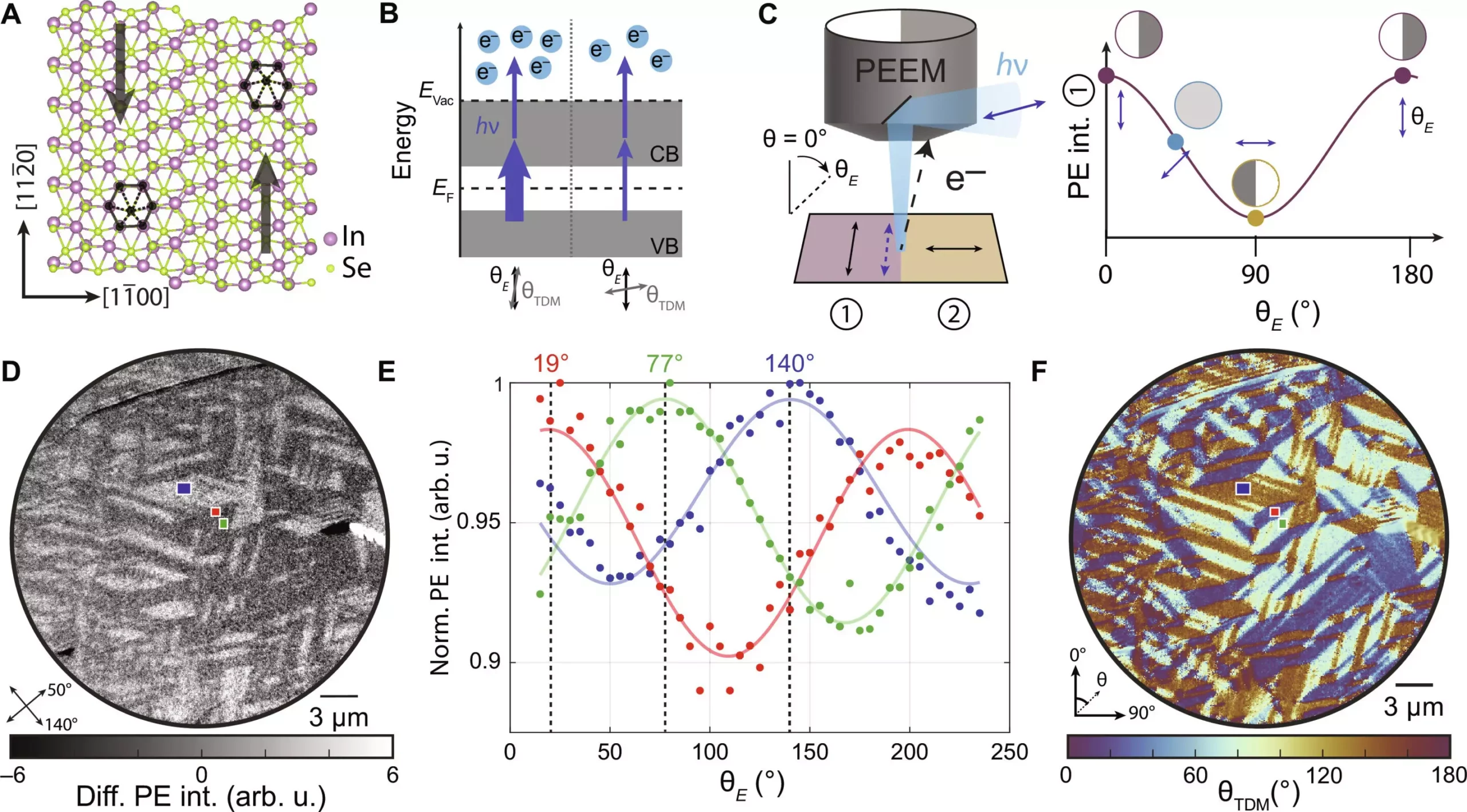In a remarkable fusion of innovation and science, researchers at the University of Chicago have embarked on a transformative journey to explore antiferroelectric materials. These special materials, with their unique electrical properties, hold the promise of unleashing a new era of technology ranging from energy storage solutions to advanced sensor systems and memory devices. The very definition of antiferroelectricity lies in the peculiar arrangement of electric dipoles within a material: these dipoles, polarized yet mutually counteractive, enable the creation of materials that harbor significant potential while remaining challenging to visualize and manipulate.
Despite the allure of antiferroelectric materials, researchers have historically grappled with the complexities of imaging and characterizing their properties. Sarah King, Assistant Professor of Chemistry and a prominent figure behind the cutting-edge study, has articulated the crux of the issue: “We don’t have a great way of determining whether something is antiferroelectric because we lack the means to visualize the domains.” This statement reflects a broader challenge that scientists face when seeking to unlock the properties of materials that might one day revolutionize our technological landscape.
A New Era in Imaging Techniques
In their groundbreaking research published in Science Advances on June 14th, King and her team unveiled a pioneering approach to imaging antiferroelectric materials at the nanoscale. By utilizing an advanced method known as polarization-dependent photoemission electron microscopy, the researchers have made significant strides in visualizing the electronic properties of materials like indium selenide, a commonly studied antiferroelectric. This fresh perspective on imaging combines the power of polarized light with electron imaging, producing a more nuanced understanding of material behaviors at the nanoscale.
The ability to clearly identify and map the arrangement of domains within these materials marks a paradigm shift in material science. The unique combination of ordered electric dipoles creates a ripe environment for exploring novel applications across various technological domains. Effectively, this breakthrough means that scientists can now observe how these materials respond to external stimuli—such as electric fields—and how their internal structures can be tuned for optimal performance.
Unlocking the Potential of Antiferroelectric Materials
It’s essential to recognize the implications of this research not only for academic inquiry but also for industrial applications. Antiferroelectric materials are not merely academic curiosities; they represent a potential goldmine for industries clamoring for energy-efficient technologies. The dynamic switching behavior that characterizes these materials could potentially revolutionize energy storage devices, making them more efficient and responsive. The dual abilities of energy storage and switching make antiferroelectric materials incredibly appealing to engineers and innovators alike.
Moreover, this research underpins a broader significance in understanding how materials can be customized for specific functionalities. King’s laboratory is embedding itself at the forefront of this quest to unravel the complexities of material behavior, reflecting an intricate interplay of order and disorder in fostering diverse properties. By critically examining not just what these materials can do, but how their microstructural arrangements dictate their macroscopic properties, they are essentially paving the way for future discoveries that could lead to smarter materials with applications we have yet to imagine.
A Collaborative Effort Towards Discovery
The excitement surrounding this research extends beyond just King and her team. Graduate and undergraduate students, as well as postdoctoral researchers, are contributing to this collaborative effort that emphasizes a hands-on approach towards discovery. With student researchers like Joseph Spellberg and Lina Kodaimati at the forefront, this diverse group is not only pushing forward scientific knowledge but also nurturing the next generation of scientists who will continue to explore the vast realm of material properties.
Intriguingly, King has emphasized the value of understanding the interactions between different material properties. By examining how various characteristics coalesce to form ordered structures, she and her colleagues are patiently building a comprehensive map of material behavior that could redefine our relationship with electronics and energy systems.
The groundbreaking work being carried out by the University of Chicago’s research team underscores a significant evolution in material science. Unveiling the mysteries of antiferroelectric materials not only fuels our quest for technological advancements but also invites a deeper understanding of how the building blocks of our devices can lead to innovations that align with our sustainable future. The journey of exploration is just beginning, and the discoveries that lie ahead could be transformative in shaping our technological landscape for generations to come.


Leave a Reply